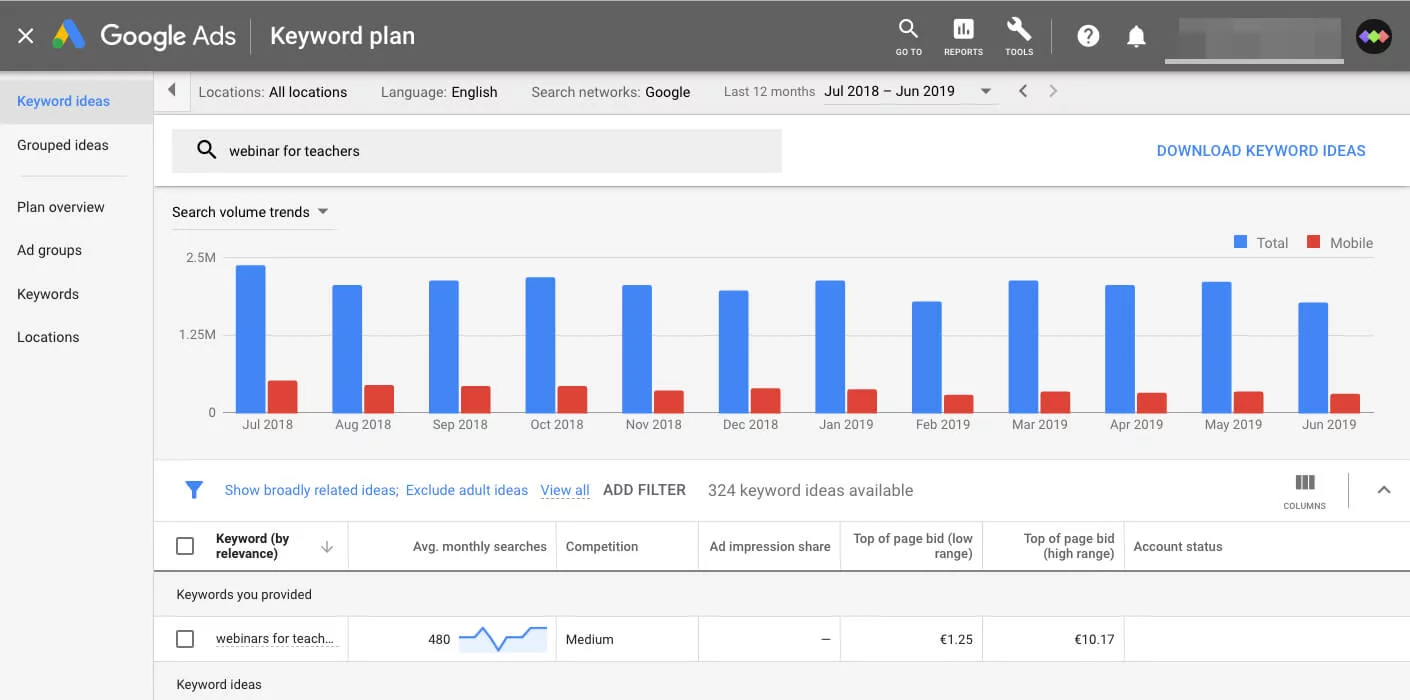
Webinars are a fantastic way to connect with an audience, share valuable insights, and even boost your business. But the key to a successful webinar starts with choosing the right topic.
Choosing Captivating Webinar Topics
Summarize with
Table of contents
A carefully selected topic attracts viewers and maintains their interest, helping you reach your goals more effectively, whether your focus is on education, marketing or sales.
Excellent webinar topics
So, how do you find the perfect topic for your webinar? Let’s walk through the process together!
Webinars have become widely used because they capture attention and successfully recreate the atmosphere of being part of a real-time event. They offer interactive experiences where participants not only listen to an expert but also join conversations, ask questions and receive instant responses.
Entrepreneurs use webinars to gather a database of potential customers and partners for marketing, public relations, and sales.
Whatever your webinar goals may be, the core of success is always the loyal audience that loves your content and personality. And the first step towards garnering that audience is choosing the excellent webinar topic. Let’s explore how to do this together!
Step 1: Define your goals

Before you begin thinking about topics, pause for a moment and consider what you hope to accomplish by hosting this webinar.
Your goal influences every aspect of your webinar, including the content you develop and the audience you want to reach. Here are some common webinar goals:
👉 Educate
Share knowledge, teach skills, and showcase your expertise.
👉 Market & Promote
Boost brand awareness, introduce a new product, or establish credibility.
👉 Connect & Engage
Build relationships with your audience and establish trust.
👉 Generate leads
Gather contacts who may be interested in your products or services.
👉 Answer questions
Provide clarity on common concerns, saving time on customer support.
👉 Sell a product or service
Convert viewers into paying customers.
Once you have a clear goal in mind, you can move on to the next step.
Step 2: Identify your target audience

Your webinar isnʼt for everyone. It’s for a specific group of people who are interested in what you have to offer. The more specific you get, the better your webinar will perform.
Here are a few questions to help define your audience:
- Who are they? (Age, gender, profession, interests)
- What are their pain points?
- What solutions are they looking for?
- What kind of content do they engage with the most?
For example, if you run an online language school, a general webinar on “Learning Chinese” might be too broad. Instead, focus on a specific challenge, like “Mastering Chinese Phonetics in 30 Days.” The more targeted your topic, the more valuable it will be.
Step 3: Brainstorm webinar topics

Now comes the exciting part as you start generating potential topics.
Here are some great ways to generate ideas:
👉 Look at trends
Stay updated with industry trends and popular search topics. If there’s a buzz around a specific topic, leverage it! Google Trends, Twitter, and industry blogs can help you spot emerging trends.
👉 Solve a problem
People love webinars that provide solutions. Think about the biggest challenges your audience faces and create a webinar to help them overcome those obstacles.
👉 Answer common questions
Review past customer inquiries, comments on social media, and FAQ sections. If a question keeps popping up, there’s a high chance many people would attend a webinar that provides the answer.
👉 Analyze search queries
Use Google Analytics, AdWords, or keyword research tools to find out what your audience is searching for. If thousands of people are looking up “How to improve public speaking skills,” a webinar on that topic could be a hit.
👉 Spy on your competition
Check out what your competitors are doing. You don’t have to copy them, but you can identify gaps and opportunities for topics they haven’t covered yet.
👉 Engage your audience
Ask your social media followers or email subscribers directly: What would you love to learn in our next webinar? A quick poll can give you insights straight from the source.
Step 4: Narrow down your options

Once you have a list of potential topics, it’s time to filter them down to the best one. Here’s what to consider:
👉 Relevance
Is the topic timely and important right now?
👉 Value
Does it provide real benefits to your audience?
👉 Demand
Is there enough interest in this topic?
👉 Your expertise
Can you confidently speak about this topic?
Choose a topic that checks all these boxes and aligns with your strengths.
Step 5: Format your topics for maximum engagement

The way you present your webinar matters just as much as the topic itself.
Here are a few popular formats:
👉 “How-To” webinars
Example: “How to Create Engaging Social Media Content That Converts”
People love learning step-by-step processes. This format works great for educational or skill-based webinars.
👉 “Behind-the-Scenes” webinars
Example: “Behind the Scenes: How We Built a 6-Figure Online Business”
Audiences enjoy an insider look at how things work. This format helps build a strong connection with your viewers.
👉 “Biggest Mistakes to Avoid” webinars
Example: “5 Common SEO Mistakes That Could Be Killing Your Traffic”
Sharing mistakes (and how to avoid them) is a fantastic way to provide value while keeping your audience engaged.
👉 “Industry Trends and Predictions” webinars
Example: “The Future of AI in Marketing: Trends to Watch in 2025”
If you position yourself as an expert, people will look to you for insights on where the industry is headed.
Final thoughts: Take action!
Choosing a great webinar topic is just the beginning. Once you have your webinar topic, start preparing by:
- Gathering materials and creating a presentation
- Writing a compelling webinar script
- Inviting guest speakers (if applicable)
- Preparing Q&A questions
- Planning your promotional strategy
A well-planned webinar can help you boost sales, establish authority, and create a loyal audience. So take your time, pick the right webinar topic, and give your audience something valuable!
Common questions
To pick the right topic, start by clearly understanding what you want to achieve. Are you trying to educate your audience, generate leads, promote a product, or build trust with your brand? Your goal will shape the type of topic you should choose and help you stay focused while planning your content. A well-defined purpose makes it easier to deliver value and drive results.
Your webinar shouldn’t try to appeal to everyone. The more specific your audience, the better you can tailor your topic to their interests, pain points, and goals. For example, instead of a broad topic like “Learning Chinese,” a better approach might be “Mastering Chinese Pronunciation in 30 Days,” since it’s clear, targeted, and speaks directly to a defined group.
You should begin by clearly defining your goal for the webinar, for example whether you want to educate your audience, generate leads, promote a product or build trust with your brand. A well-defined goal helps you choose a topic that supports what you aim to achieve.
Because the more specific your audience is, the more you can tailor your topic to their interests, pain points and expectations. If you try to appeal to everyone, your topic may become too broad and lose focus and relevance.
You can brainstorm by looking at current trends and popular search topics, analysing what questions your audience often asks, identifying common problems they face and checking what topics your competitors haven’t covered yet.
You should check whether each topic is timely and relevant, whether it offers real value to your audience, whether there is enough interest or demand for it, and whether you have the expertise to speak confidently on it.
Because the way you present your topic influences how appealing it is and how much interaction you get. For example you could choose a “How-to” format to teach a skill step-by-step, a “Behind-the-Scenes” format to give insight into your process, “Biggest Mistakes to Avoid” to highlight pitfalls, or “Industry Trends and Predictions” if you want to position yourself as an expert.
An expert behind the simplified online meeting and webinar software platform, MyOwnConference. In today’s flexible work environment, Dan offers invaluable life hacks, in-depth reviews, and savvy tips for organizing, promoting, and excelling in virtual conferences and webinars.











